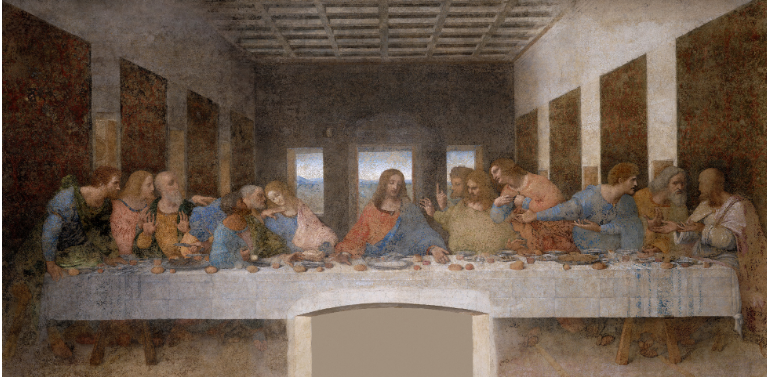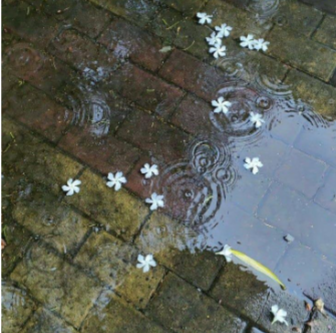To be Seen is To Be Naked: an Analysis of No Longer Human
- Kiara Aggarwal
- Jun 1
- 5 min read
By Alin Sengjaroen
C.W.: The following discussion will contain story spoilers
What does it mean to fear?
To fear something so strongly you’re almost too embarrassed to admit it. A fear that
resonates with who you were brought up as – perhaps something as simple as being seen as
nothing more than dust and wind.
For the so-called most depressing novel, outside of the themes of alienation and self-hatred,
there were subtle exchanges that haunted Yozo, our protagonist, for life. When he was young
and deceitfully carefree, despite blatantly lying to other’s faces, there was nothing that could
compare to the horror of being understood.

“Every deep thinker is more afraid of being
understood than of being misunderstood.”
– Friedrich Neitzche
Yozo spent his life from the start dedicated to playing a part. Now, he was confident that
none would know his true self. This wall he’s built to shelter himself from society will stand
tall forever. Yet, soon enough, someone saw through the small crevice. When the clown fell
as a trick, so too did part of the walls crumble, as Takeichi whispered into Yozo’s ears, “You
did it on purpose.” Five simple words. Yet the hole was unmendable.
Takeichi, as shown, was none like the others. He was the first person to have ever stood out
from the audience and called an actor, an actor. His words spoke like a tarot reading of his
up both tangled with love affairs and painting but only for the money. Takeichi was like a
messenger from fate, whether he was supposed to be from heaven or not, he certainly was
hell for Yozo.
After the first interaction, he left Yozo’s mind. Since then, he plays his clowning like a violin
strung to the max, waiting for one wrong move for it to snap. Every time he cracks a joke, he
can’t help but ‘painfully sigh,’ knowing that there is someone out there who wouldn’t fall for
such cheap lies. For once in his life, Takeichi – without years of a look into his soul –
understood him.
Later on, he’d encounter sleepless nights as he pondered what he’d do to completely get rid
of Takeichi’s doubts. The first method was to further lie:
“I brooded over what I should do: I would devote the hours spent with him to persuading him
that my antics were not ‘on purpose’ but the genuine article; if things went well I would like
to become his inseparable friend...”
It took years for him to perfect this act, then comes the one who saw through it at first look.
Since he’s seen through Yozo’s lie, who knows if he’ll tell everyone that he’s a fraud, or even
worse, tell everyone what the real Yozo is like.
And so the second plan, death:
“...;but if this proved utterly impossible, I have no choice but to pray for his death. Typically
enough, the one thing that never occurred to me was to kill him. During the course of my life,
I have wished innumerable times that I might meet with a violent death, but I have never once
desired to kill anybody. I thought that in killing a dreaded adversary I might actually be
bringing him happiness.”
To kill Takeichi is to confirm that Yozo was, in fact, a conman. If his outer shell was truly
genuine, he wouldn’t have a reason to kill Takeichi. Just picking up a knife is already enough
to confirm Takeichi’s suspicions that deep inside, Yozo desires death.
And so Yozo went with the first plan. One rainy day, he dragged Takeichi into his home and
into his room where he cleaned Takeichi’s ears for him. To bring someone into your home is
to show your true self. Home is where you’re most vulnerable, especially into your personal
bedroom. It’s vulnerable, it’s intimate, it houses your deepest secrets. And by that, Yozo and
Takeichi would get along. No longer did Takeichi utter those five simple words or any
variations that implied as such. Neither did he reveal those findings to any outsiders. This was an intimate secret between the two middle schoolers. But it wasn’t that he became convinced. Yozo was almost starting to accept his fear.
Instead they shared paintings and their love for art, going as far as to only show Takeichi
specific ‘ghostly’ style paintings to Takeichi and no one else. As Yozo grew up, he lost his
ghost portraits and he’d always look at the memory fondly every time. Every time he picks
up his paintbrush, he thinks of the ghosts – of Takeichi. His other half that understood him.
Perhaps a little too well.
But, in the first place, why does he fear such trivial matters? The answer’s simple. It wasn’t
just that he feared to be understood – it was the shame that followed suit. The shame that he
acquired after going through traumatic ‘affairs’ with the maids in his childhood. When the
clown pretends to joke, he has confidence in himself that he can make people laugh, but when
people call him by his real not-stage-name, he will be the one being laughed at.
Although steadily Yozo spirals into deeper depression, he slowly overcomes shame. In better
words, he simply became too tired to care. Ever since his first double suicide, he stopped
concealing his thoughts like he used to do so strongly. It wasn’t an outward positive character
development, but it was development nonetheless (a subtle one at that).
Still, No Longer Human wasn’t just a story of Yozo but of Osamu Dazai. His has been a life
of shame, but in the end, he fought against shame, and finally published this novel, revealing
his intimate thoughts to the public. Likewise with Yozo’s ending, these too were his final
feelings.
PS. The direct sequel to No Longer Human is called The Flowers of Buffoonery. They’re
scenes that Dazai scrapped out of the main novel. Many times, he’d interrupt his own story,
and it is hilarious. So it’s worth checking out after you’ve worn your mental health out after
reading this.



Comments